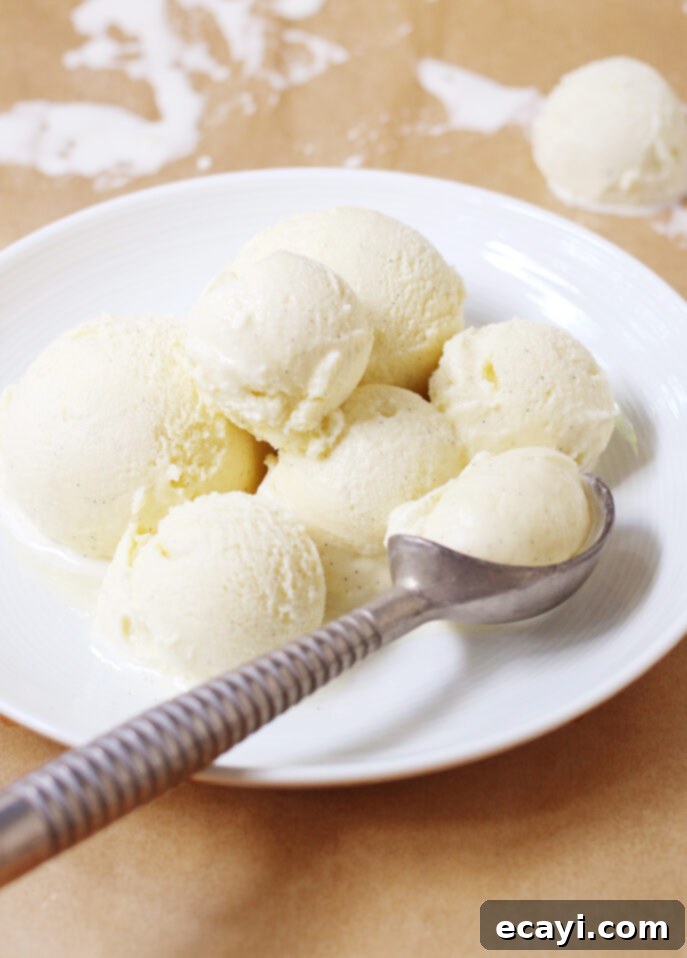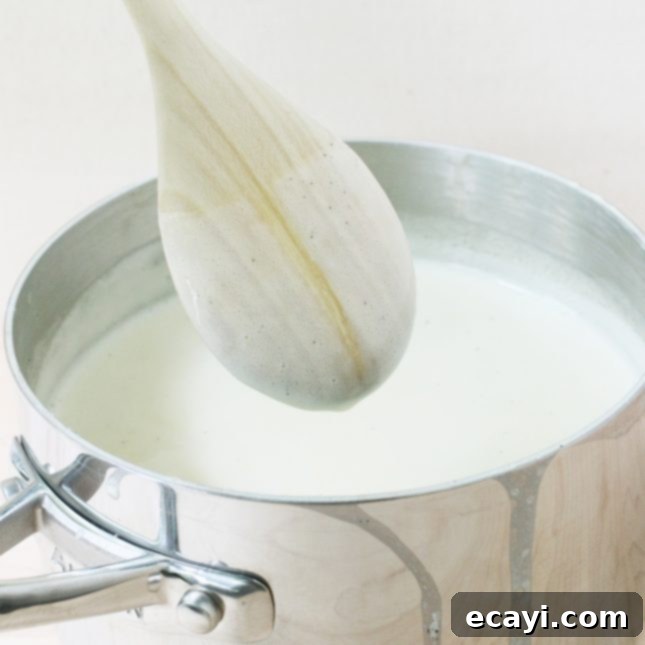The Ultimate Guide to Homemade Gelato: Crafting Authentic Italian Ice Cream at Home
Embark on a culinary adventure to create the creamiest, most intensely flavored gelato right in your own kitchen. This comprehensive guide, complete with step-by-step instructions and a video masterclass, will show you how to transform a simple base into an array of irresistible flavors, replicating the authentic Italian experience.

This post contains affiliate links. Full disclosure is at the bottom of the article.
My journey into the captivating world of authentic homemade gelato began nearly two decades ago during my inaugural trip to Italy. Before my departure, I’d heard endless praise for Italian ice cream—tales of unparalleled creaminess, vibrant colors, and flavors so intense they lingered long after the last spoonful. Everyone I spoke to seemed enchanted by the mere memory of it, fueling my curiosity to uncover the secrets of this beloved dessert. Was gelato truly different from the American-style ice cream I knew? Unable to get a definitive answer, I dedicated my entire trip to rigorous “research,” sampling gelato daily, sometimes even twice a day, to discern its unique qualities. And yes, it was purely for research, of course!
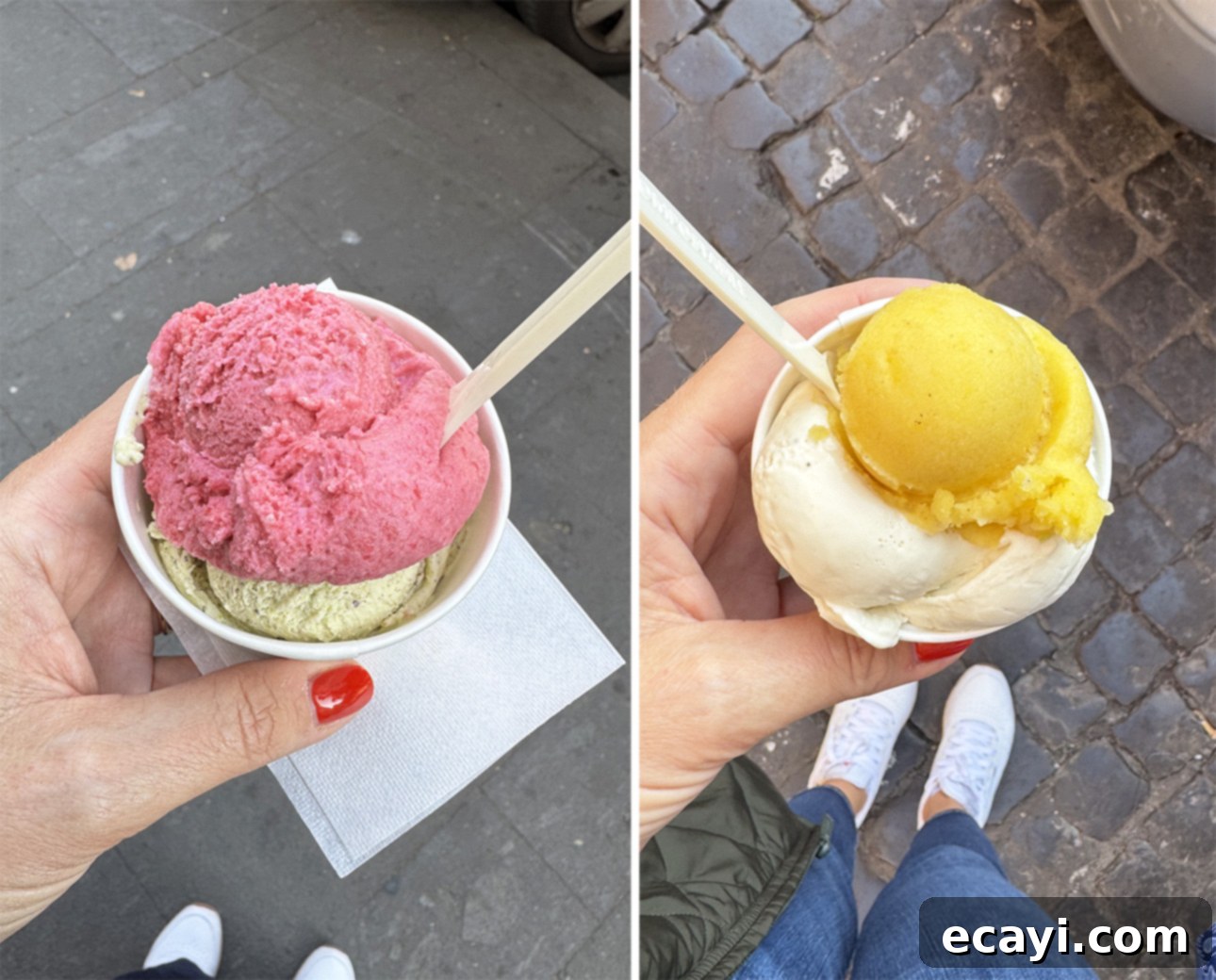
What I discovered was a revelation: gelato boasts a strikingly intense and pure flavor profile, its colors are bright and inviting, and its texture is refreshingly clean—never overly rich or heavy. During that first Italian sojourn, I was particularly drawn to fruit-based flavors. They delivered the powerful fruitiness of sorbets but with a delightful creaminess, devoid of the frothy, egg-whitey consistency often found in similar frozen desserts. The experience solidified my resolve to master this Italian art form.
Upon returning home, I immersed myself in all things gelato, determined to understand its fundamental differences, preparation methods, and the science behind its irresistible allure. Over the years, I’ve meticulously gathered and refined countless tips and tricks, and now, I’m thrilled to share them all with you. Prepare to create the finest Italian ice cream you’ll ever taste outside of Italy, right in your own kitchen!
VIDEO: GELATO MASTERCLASS – Your Gateway to Homemade Perfection
New to the world of gelato making? Or perhaps you’re simply curious about the distinct characteristics that set authentic Italian gelato apart from traditional American-style ice cream? Look no further than my vibrant video masterclass! In this engaging session, I’ll walk you through the process of creating a versatile gelato base that can be effortlessly adapted into an array of delicious flavors. You’ll unlock all my closely guarded secrets and expert tips for churning and serving truly outstanding gelato, ensuring a perfect texture and intense flavor every time. I even demonstrate how to craft an incredibly creamy dairy-free and vegan gelato, proving that everyone can enjoy this delightful treat!
In essence, this is a comprehensive, visually rich class designed to quickly transform you into a confident gelato master. You’ll gain the knowledge and skills needed to impress your friends and family with your homemade creations. Don’t wait—watch now and start your gelato journey!
Unveiling the Differences: Gelato vs. Ice Cream
Have you ever wondered why authentic Italian gelato consistently delivers a more intense flavor and a uniquely silky-yet-light sensation compared to typical American ice cream? This fundamental question captivated me after my very first spoonful in Italy, driving me to uncover the culinary science behind this delightful distinction.
While both are cherished frozen desserts, their identities are far from identical. Gelato’s enchanting qualities stem from a few critical differences in its preparation, composition, and serving style:
- Lower Fat Content, Higher Flavor Impact: This is often the biggest surprise for many enthusiasts. Genuine gelato actually contains substantially less fat than most American-style ice creams. Instead of relying heavily on rich cream as the primary ingredient, gelato predominantly uses whole milk, often with just a touch of cream—and in some variations, none at all. It also tends to incorporate fewer egg yolks, though this can vary regionally. While fat undoubtedly contributes richness, it also has a tendency to coat the palate, which can mute or dull delicate flavors. Gelato’s judiciously lower fat content is precisely why its vibrant fruit, robust nut, or rich chocolate flavors taste so remarkably bright, clear, and unhindered. This allows the true essence of the ingredients to shine through.
- Distinctly Denser Texture, Less Air: If you’ve ever observed gelato being crafted in an artisan shop, you’ll notice it’s churned at a significantly slower pace than typical ice cream. This deliberate, slower churning process is crucial because it incorporates considerably less air into the mixture. This amount of air is professionally termed “overrun.” American ice cream can contain as much as 50% air, which gives it its characteristic lighter, fluffier, and often more voluminous texture. In contrast, gelato’s much lower overrun (typically ranging from 20-35%) results in its famously dense, smooth, and intensely satisfying texture. Less air means each spoonful delivers a more concentrated burst of pure flavor, a hallmark of authentic gelato.
- Optimal Silkiness Through Warmer Serving: It might seem counterintuitive, but gelato is intentionally stored and served at a slightly higher temperature than standard ice cream. While ice cream is typically kept below 0°F (-18°C), gelato is served at around 5 to 10°F (-12 to -15°C). This isn’t a mere oversight; it’s a deliberate technique to preserve its unique qualities! Being served at a slightly warmer temperature keeps the gelato softer and exquisitely silky, allowing it to melt slowly and luxuriously on your tongue. Furthermore, when your taste buds aren’t numbed by extreme cold, you’re able to perceive and appreciate its complex flavors with far greater intensity and nuance.
Mastering Your Foundation: Classic vs. Sicilian Gelato Bases
To begin your journey into homemade gelato, selecting the right base recipe is paramount. It’s important to understand that there isn’t a single, monolithic “official” formula for Italian ice cream; each region, sometimes even each artisanal shop, proudly offers its own unique spin, leading to passionate debates over whose version reigns supreme. The chosen ingredients also vary significantly depending on the desired flavor, with some vibrant fruit-based varieties containing little to no dairy for a purer taste.
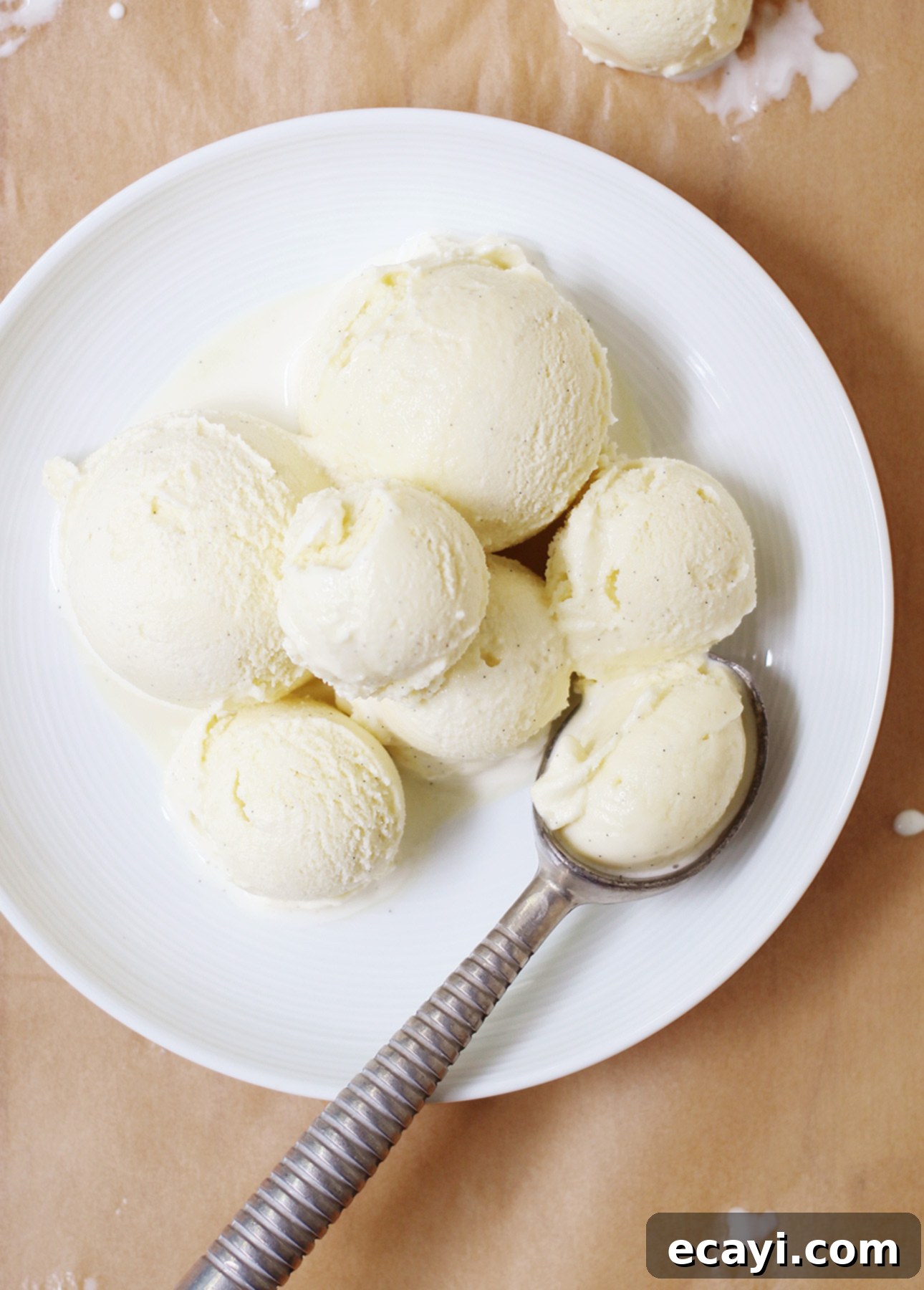
Through extensive experimentation and refinement, I’ve concentrated on developing two highly versatile base recipes that serve as perfect canvases for a myriad of flavors, from rich chocolate and robust pistachio to bright lemon and juicy blueberries. These two foundational recipes will equip you to create virtually any gelato flavor you desire:
- Classic Gelato Base: This traditional version is built upon an egg yolk-rich custard, which imparts a wonderfully creamy, almost velvety mouthfeel and contributes to its characteristic soft, pale-yellow hue, reminiscent of a classic French ice cream. When infused with a split vanilla bean during the cooling process, this base yields an absolutely incredible vanilla gelato. I consistently rely on this classic custard base for richer, more indulgent flavors, such as deep chocolate, luxurious nut-based gelatos like hazelnut or pistachio, and creamy coffee varieties. Below, you’ll find my tried-and-true recipe for this foundational classic base, ready to be flavored to your heart’s content.
- Sicilian-Style Gelato Base: Popular throughout the sun-drenched island of Sicily, this innovative method distinguishes itself by utilizing cornstarch as a thickening agent instead of egg yolks. The result is a strikingly bright white gelato with an exceptionally smooth, almost melt-in-your-mouth velvety texture. In my experience, Sicilian-style gelato is an outstanding choice for showcasing the vibrant, fresh flavors of fruits. Its neutral color and clean profile allow the natural brilliance of fruit purees to truly shine without any interference from the richness of egg yolks. To delve deeper into this fascinating technique and explore its unique advantages, head over to my in-depth exploration of Sicilian-Style Gelato, where you’ll learn all the nuances of this lighter, brighter base.
Pictured below, at the top: Classic Gelato Base
Bottom: Sicilian-Style Gelato Base
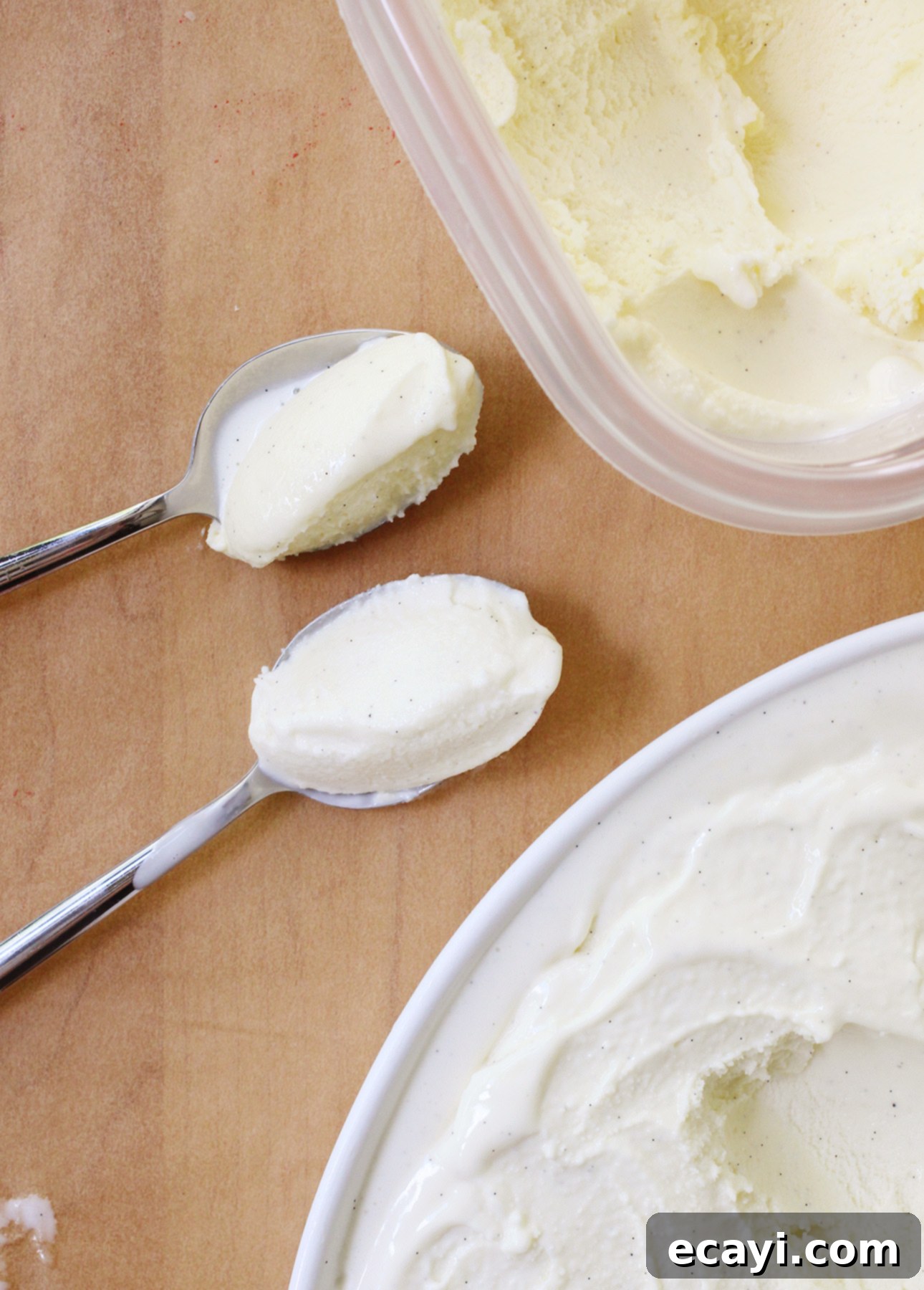
VIDEO: Witness the magic of Sicilian-Style Gelato creation:
Crafting Creamy, Dreamy Vegan Gelato: No Dairy, All Flavor
Are you under the impression that you must compromise on that authentic Italian ice cream texture if you’re embracing a vegan lifestyle or avoiding dairy? Think again! I’ve dedicated considerable time and passion to developing a fully plant-based gelato base that defies expectations, delivering a surprisingly creamy, rich, and utterly indulgent experience. Say goodbye to icy, bland, or unsatisfying results—my vegan gelato genuinely rivals its dairy counterparts.
By employing a thoughtful and clever blend of non-dairy milks, healthy plant-based fats, and natural stabilizers, my vegan gelato achieves a luscious consistency and vibrant flavor profile that closely mimics the real thing. This innovative vegan base is incredibly versatile and can seamlessly substitute for either the classic or Sicilian-style recipes, unlocking a whole new universe of plant-based flavor possibilities. For an in-depth understanding of the science and techniques behind this successful dairy-free creation, be sure to explore my dedicated post on How to Make Vegan Gelato, which includes a must-try Mango and Passion Fruit version to kickstart your vegan gelato adventures.
Uncover my proven secrets to crafting truly amazing vegan gelato.
The Essential Role of an Ice Cream Maker for Authentic Gelato
After diving into my detailed recipes and watching my informative video masterclass, a frequent question I receive is: “Do I truly need an ice cream maker to make gelato?” If your goal is to achieve that unmistakably dense, silky, and authentically Italian texture—the very essence of what makes gelato so special—my unequivocal short answer is yes. Here’s a more in-depth look at why this kitchen appliance is not just helpful, but truly essential for genuine results:
- Churning is the Core of Gelato’s Texture: The fundamental difference lies in the churning process. Gelato is deliberately churned at a significantly slower speed than conventional ice cream. This slower rotation rate is key to incorporating substantially less air into the mixture, a crucial factor in achieving its signature density and smooth consistency. This low “overrun” (the amount of air incorporated) is what prevents large ice crystals from forming, ensuring that coveted silky texture unique to Italian gelato. Without controlled churning, it’s virtually impossible to replicate this delicate balance.
- Why “No-Churn” Methods Fall Short: You’ll undoubtedly come across numerous “no-churn” ice cream recipes that often rely on a combination of condensed milk and whipped cream. While these can certainly produce enjoyable frozen desserts, they fundamentally differ from authentic gelato. Their higher fat content (from the whipped cream) and the absence of slow churning result in a much lighter, airier, and often richer product. This texture is delightful in its own right, but it lacks the lower-fat intensity and dense, smooth mouthfeel that defines true gelato. These methods simply cannot replicate the delicate ice crystal structure that slow churning creates.
- The Machine Makes the Magic Happen: Regardless of whether you opt for a freezer-bowl model (which requires pre-freezing the bowl) or a more advanced self-freezing compressor unit, the ice cream maker is the engine that drives the transformation. It’s the controlled, consistent churning motion that takes a liquid gelato base and slowly, precisely, turns it into the thick, creamy, and undeniably silky frozen treat we adore. This process emulsifies the fats, sugar, and water, simultaneously chilling and aerating (minimally, in gelato’s case) the mixture to perfection.
- You Don’t Need a Top-Tier, Expensive Model: While some manufacturers market specialized “gelato makers” with premium price tags, you absolutely don’t need to invest a fortune. My reliable basic Cuisinart ice cream maker has consistently produced beautiful, authentic gelato for nearly 15 years. In fact, most home-grade ice cream machines naturally churn at a slower speed than their commercial counterparts, making them inherently well-suited for achieving the desired low overrun necessary for authentic gelato. Focus on consistency and quality of ingredients, and your standard home ice cream maker will serve you well.
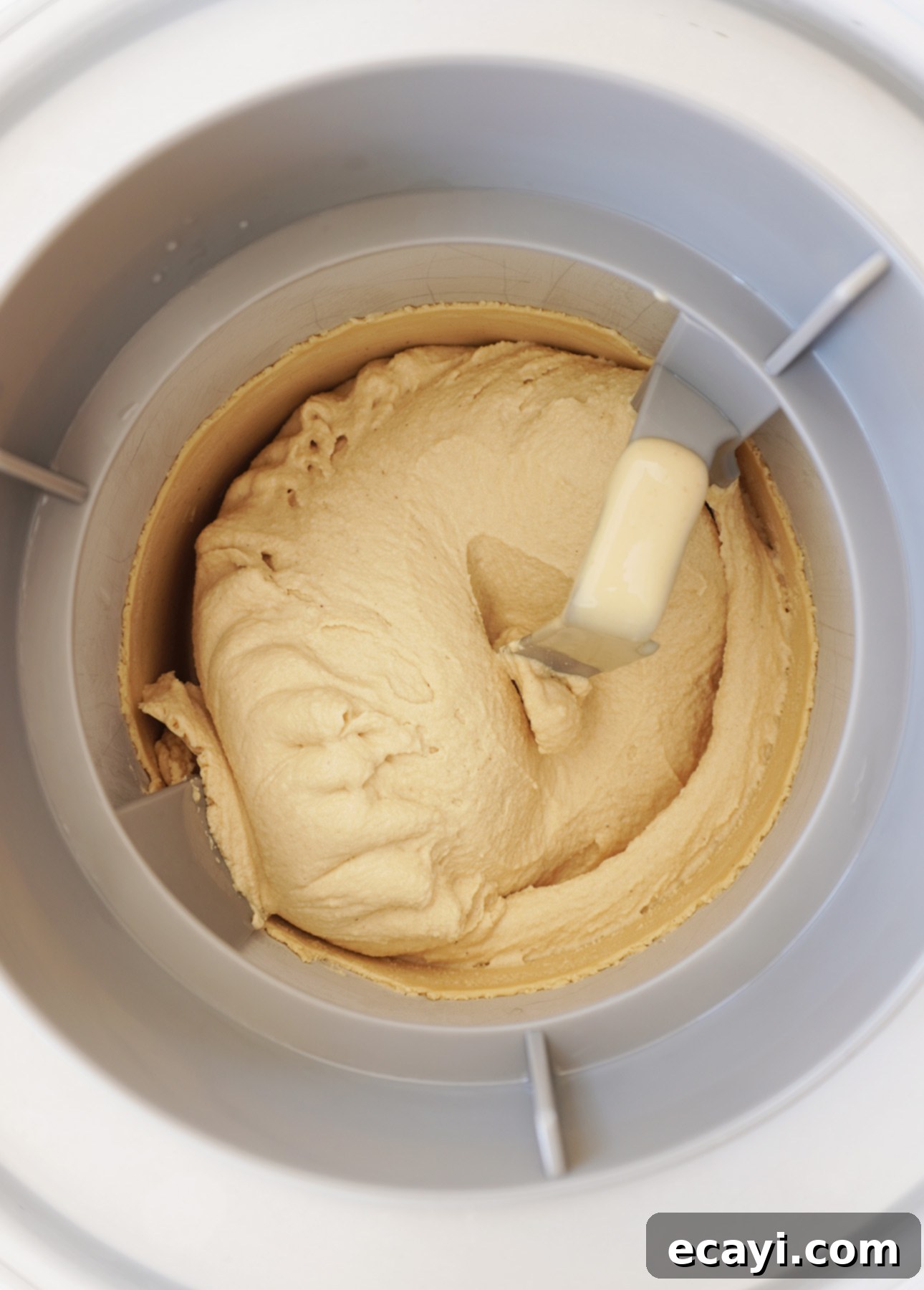
The Simple Yet Essential Ingredients for Classic Gelato
To embark on crafting my classic gelato base, you’ll be delighted by the simplicity of the ingredients required: you’ll need only milk, sugar, and egg yolks. That’s truly it! The magic lies in the quality of these few components and the technique used to combine them.
For those with lactose intolerance, adapting this recipe is straightforward. Simply substitute lactose-free milk and cream (if using) in a 1:1 ratio. The crucial detail here is to ensure that your lactose-free alternatives possess the same fat content as specified in my recipes. Maintaining the correct fat percentage is vital for achieving the perfect creamy consistency and authentic taste that gelato is renowned for. This ensures that dietary needs don’t compromise the delightful experience of homemade Italian ice cream.
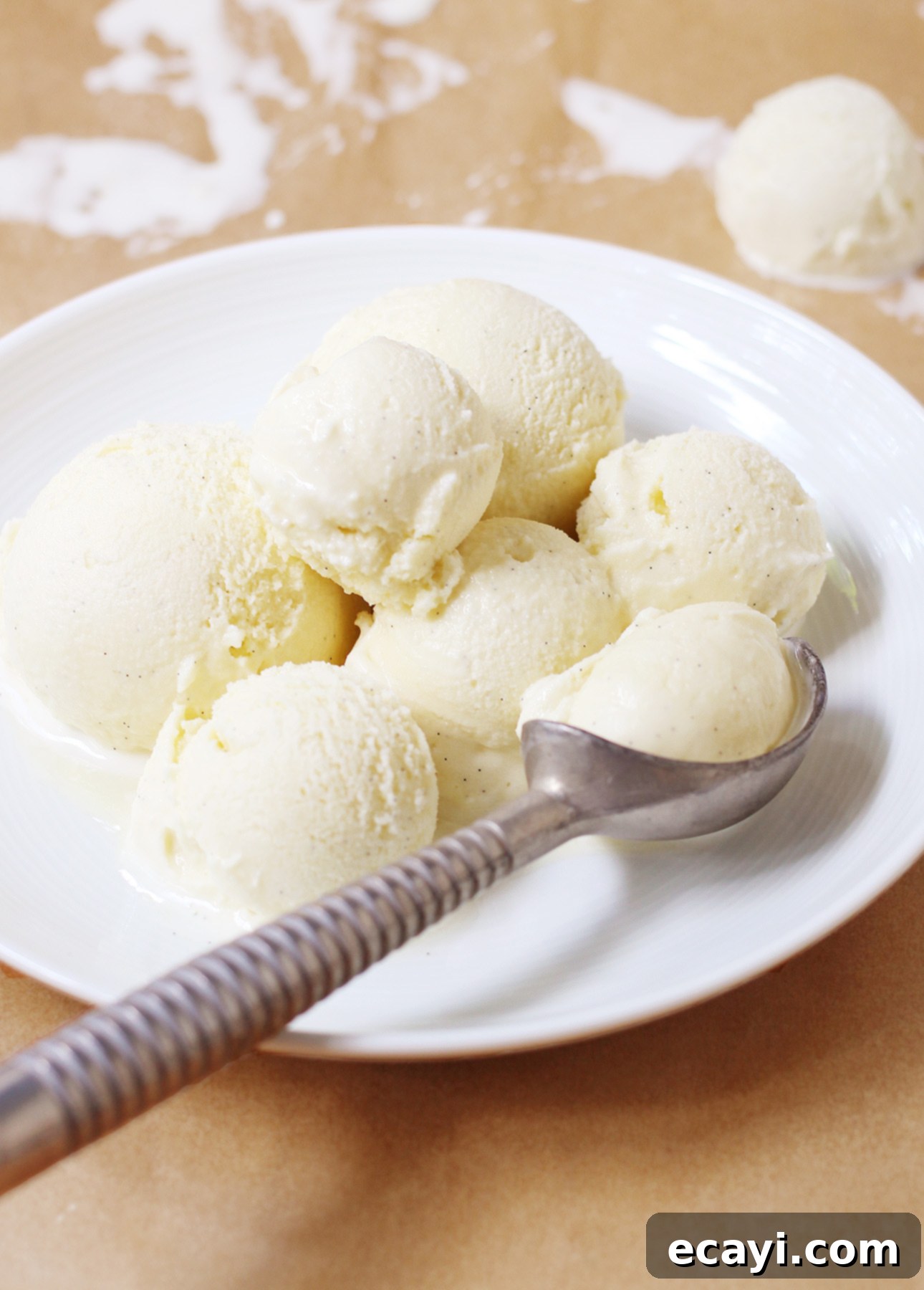
Beyond Vanilla: Elevating Your Gelato Base with Diverse Flavors
The classic and Sicilian gelato bases are truly exceptional building blocks—think of them as pristine blank canvases awaiting your creative culinary strokes. Their versatility allows you to effortlessly transform them into an endless array of popular favorites and exciting new combinations. You’ll find detailed, full recipes for all these ideas and more in my comprehensive Gelato Recipe Collection:
- Vibrant Fruit Gelatos: Imagine the deep intensity of sweet cherries or the bold, tangy burst of fresh blueberries. The secret to extraordinary fruit gelato lies in using only the highest quality, ripest fresh fruit (or frozen-at-peak produce) to craft a concentrated, intensely flavorful purée. Fruit gelatos typically reach their peak brilliance when paired with the lighter, eggless Sicilian-style base, as its neutral profile allows the natural fruit flavors to truly sing. For a taste of just how vibrant fruit can be, be sure to check out my Mango and Passion Fruit Vegan Gelato recipe.
- Rich Nut-Based Gelatos: For that iconic Pistachio, the elegant Almond, or the utterly indulgent Hazelnut gelato, the true secret lies in employing a top-quality, concentrated nut paste rather than merely using chopped nuts. While commercial nut pastes are undeniably potent in flavor, they often come with a hefty price tag. My specialized nut-based gelato recipes (such as those for pistachio, almond, and hazelnut) ingeniously guide you through the process of making your own nut paste from scratch. This homemade approach is significantly more economical and yields results that are just as, if not more, delicious. I highly recommend pairing these rich nut flavors with my classic, custard-based recipe for an unparalleled creamy, nutty flavor and luxurious texture.
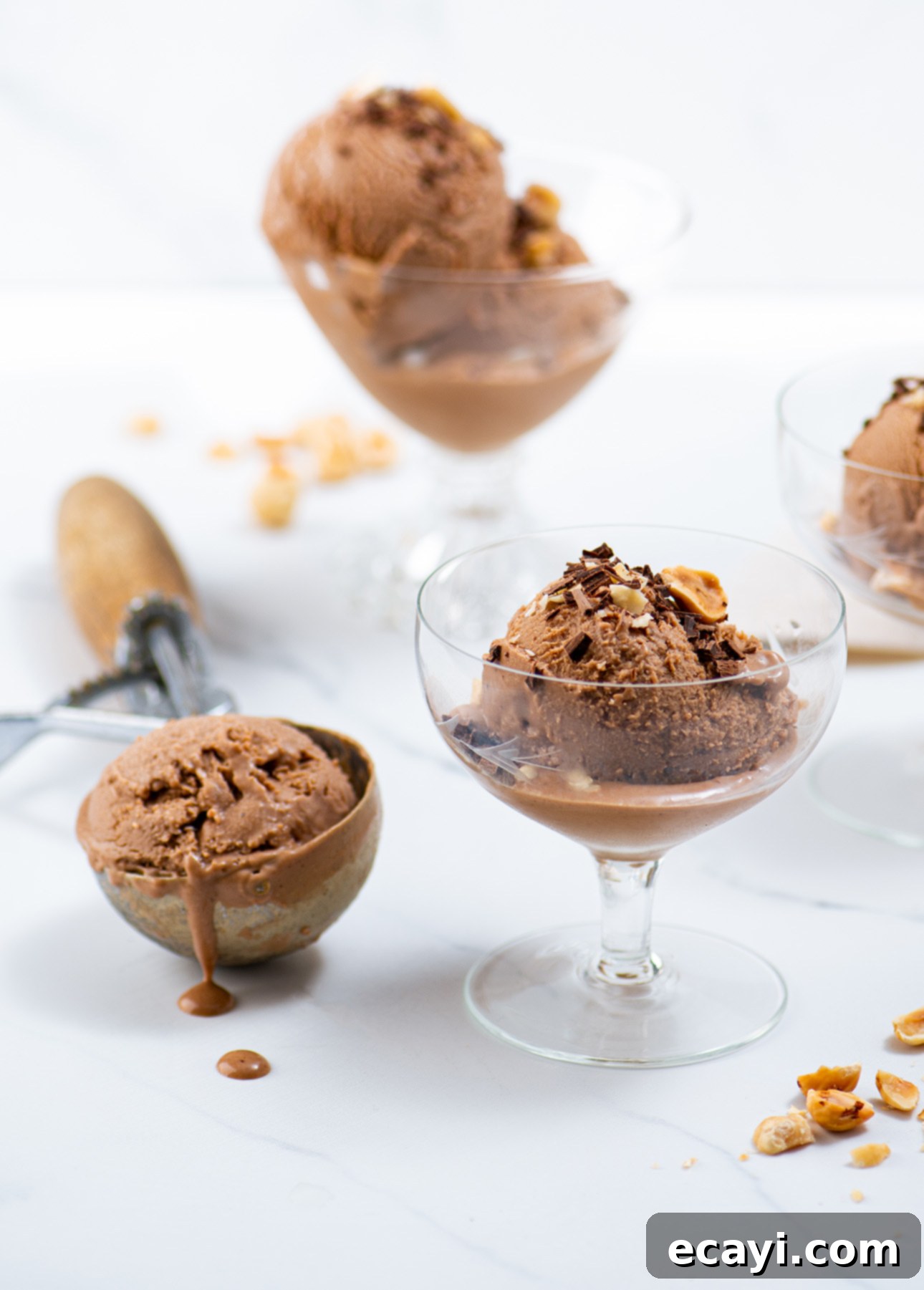
- Decadent Chocolate, Aromatic Coffee & Beyond: Craving a deeply satisfying dark chocolate gelato? Simply whisk in high-grade cocoa powder into your warm custard base, or for an even richer result, fold in finely melted chocolate near the very end of the churning process. To create an aromatic coffee gelato, steep freshly crushed coffee beans in the warm milk base, allowing them to infuse their robust essence. Hearty, robust flavors like chocolate, coffee, and the unique sweetness of maple gelato consistently shine brightest when combined with the rich, comforting profile of the classic custard base.
- The Art of Stracciatella: For those delicate, irresistible chocolate shards that define Stracciatella gelato, the technique is surprisingly simple. Melt a high-quality dark chocolate, allow it to cool slightly so it’s still pourable but not hot, and then drizzle it slowly into your almost-finished gelato during the final minutes of churning. The cold gelato will instantly solidify the chocolate into exquisite, irregular flakes, adding a delightful textural contrast.
Don’t hesitate to experiment and let your creativity guide you! The world of gelato flavors is vast and exciting. For even more inspiring ideas and detailed recipes, jump over to my full Gelato Recipe Collection—it’s a treasure trove of delicious possibilities.
Optimal Storage: Preserving the Perfection of Your Homemade Gelato
Congratulations, you’ve churned your very first batch of exquisite homemade gelato! Now, to ensure it retains its incredible flavor and creamy texture, proper storage is absolutely crucial. Follow these guidelines to keep your gelato tasting top-notch:
- Select the Ideal Container: Once your gelato is freshly churned and still somewhat soft, immediately transfer it into a shallow, airtight container. Shallow containers are preferable because they allow the gelato to freeze more quickly and evenly, minimizing the formation of large ice crystals. I frequently opt for standard loaf pans, which I then carefully cover with plastic wrap. Metal containers are particularly effective as they chill rapidly, aiding in quick freezing. If you plan to make your gelato well in advance and anticipate it freezing overnight before serving, you can also use specialized ice cream storage containers or other standard shallow rectangular airtight containers. The key takeaway here is: anything that is airtight and relatively shallow will work beautifully!
- Combatting Ice Crystals: The enemy of creamy gelato is air, which leads to the dreaded formation of crunchy ice crystals. To prevent this, once the gelato is in its container, press a layer of plastic wrap or parchment paper directly onto the surface of the gelato before sealing the container with its lid. This barrier prevents air from coming into contact with the gelato, maintaining its smooth, delicate texture.
- Understanding Your Freezer Environment: It’s important to remember that most home freezers operate at colder temperatures than commercial gelato shop freezers. This means your homemade gelato will firm up considerably more once fully frozen. For the absolute best texture and flavor, aim to enjoy your gelato within one to two weeks of churning. Beyond this period, while still edible, the texture may start to degrade slightly due to gradual ice crystal formation. And always, always ensure you let it soften on the counter for a crucial 10–15 minutes before attempting to scoop it. This tempering step is vital for the perfect serving experience.
The Art of Serving Homemade Gelato for Maximum Enjoyment
After all your efforts in crafting the perfect homemade gelato, the final step—serving it—is just as important for maximizing its deliciousness. Here’s a crucial tip to unlock its full potential: because the average home freezer operates at a significantly colder temperature than the display cases found in Italian gelaterias, your gelato will likely be very firm when you first retrieve it. Therefore, it’s essential to let your gelato rest on the counter for a good 10–15 minutes before you attempt to serve it.
This tempering period serves two vital purposes. Firstly, gelato’s lower fat content (compared to ice cream) means it freezes considerably harder, making it challenging to scoop straight from the freezer. Allowing it to soften slightly makes scooping much easier. Secondly, and perhaps more importantly, this brief warm-up period gently raises the gelato’s temperature to its ideal serving range. This not only restores that luxurious, bar-style texture we all adore but also awakens and intensifies its delicate flavors. When your taste buds aren’t numbed by extreme cold, you’ll experience the full spectrum of its vibrant taste and silky mouthfeel, just as it’s meant to be enjoyed.
Troubleshooting Your Gelato: Quick Fixes for Common Issues
Don’t be disheartened if your first few batches aren’t absolutely flawless. Gelato making is an art form that improves with practice, and even experienced cooks encounter challenges. The good news is that most common issues have simple solutions that can help you save the day and perfect your technique:
- Issue: My gelato is icy or gritty. This unpleasant texture, characterized by large ice crystals, typically indicates that the gelato froze too slowly, allowing water molecules to coalesce into larger ice formations.
- Fixes:
- Chill your base thoroughly: A perfectly chilled base (ideally refrigerated overnight) will freeze faster in the machine.
- Ensure your freezer bowl is rock-solid: If using a freezer-bowl model, make sure the bowl is completely frozen solid, often requiring 12-24 hours in a very cold freezer.
- Double-check sugar/fat ratios: Both sugar and fat act as natural anti-freeze agents, helping to control ice crystal size. Ensure you’re accurately measuring these key ingredients as per the recipe.
- Issue: My gelato is rock-hard. Gelato’s inherently lower fat content compared to American ice cream means it will naturally freeze more solid in very cold home freezers.
- Fixes:
- Temper it properly: Always allow your gelato to soften on the counter for 10–15 minutes before scooping. This is the most crucial step for hard gelato.
- Confirm sugar amount: Verify that you used the full amount of sugar specified in the recipe, as sugar significantly lowers the freezing point, helping keep the gelato softer.
- Issue: My gelato is too soft or runny and never really thickened. If your mixture failed to achieve the desired thick consistency during churning, it’s usually due to insufficient coldness at the start of the process.
- Fixes:
- Chill your base longer: Extend the refrigeration time for your gelato base (preferably overnight).
- Fully freeze the bowl: Ensure your ice cream maker’s freezer bowl is absolutely frozen solid before you start churning.
- Measure sugar or alcohol precisely: While sugar lowers the freezing point, too much sugar (or alcohol, if added for flavor) can prevent the mixture from solidifying properly. Be exact with your measurements.
- Issue: My gelato has a bland flavor. The beauty of gelato’s lower fat content is precisely that it allows flavors to pop and shine. If yours tastes dull, the culprit might be your ingredients or how they were prepared.
- Fixes:
- Prioritize quality ingredients: Use really fresh, top-quality flavorings, such as pure vanilla extract or beans, high-grade cocoa powder, truly ripe fruit, or robust, homemade nut pastes.
- Concentrate fruit purées: If using fruit, ensure your purées are concentrated and not watery, as excess water can dilute flavor.
- Taste the base: Before churning, and if safe to do so (i.e., not raw egg-based unless you know your eggs are pasteurized), taste the chilled base to assess if the flavor needs a boost.
Remember, minor adjustments like these can profoundly transform your gelato churning experience. Don’t hesitate to leave any questions you have in the comments section below, and I’ll gladly offer my assistance. With a bit of practice and attention to these details, you’ll soon be consistently making the most exquisite Italian ice cream imaginable—rivaling anything found outside of Italy!
 Print Recipe
Print Recipe
Pin RecipeClassic Gelato Base Recipe
Learn how to make the creamiest Italian ice cream at home using step-by-step instructions and turn one easy base into a multitude of flavors. This classic custard base is the perfect starting point for rich, decadent gelato.Prep Time:10 minutesCook Time:10 minutesChurning/Freezing Time:2 hours 30 minutesServings 1 quart (4 cups/1L)Author Marie AsselinIngredients
US Customary / Metric- 3 cups milk, preferably whole (3.25% m.f.) or partly skimmed (2% m.f.)
- 5 large egg yolks (about 20 grams each)
- ¾ cup granulated sugar
Instructions
-
In a medium saucepan, gently warm the milk over medium heat until small bubbles just begin to form around the edge of the pan. Do not bring it to a rolling boil. Remove from the heat and set aside.
-
In the bowl of a stand mixer, or in a large mixing bowl if you are using a hand mixer, beat the egg yolks and granulated sugar together vigorously until the mixture becomes thick, pale yellow, and creamy. This should take approximately 2 minutes at medium speed.
-
With the mixer running on low speed, slowly and gradually pour in one ladleful of the warm milk into the egg mixture. This step, known as tempering, prevents the eggs from scrambling. Once combined, slowly pour in the remainder of the warm milk while continuing to beat until the milk is thoroughly incorporated into the egg and sugar mixture.
-
Pour the combined milk and egg mixture back into the saucepan. Place it over medium-low heat and cook, stirring constantly with a wooden spoon or spatula, until the custard thickens sufficiently to coat the back of the spoon. Be careful not to let it boil, as this can curdle the eggs.

-
Remove the custard from the heat immediately. Allow it to cool down to room temperature, then transfer it to an airtight container and refrigerate for a minimum of a few hours, or preferably overnight. It is crucial for the custard to be very cold before you pour it into the ice cream maker to ensure proper churning and texture.
-
Before churning, pour the chilled custard through a fine mesh strainer directly into the bowl of your ice cream maker. Straining ensures that any small bits of cooked egg or impurities are removed, guaranteeing an exceptionally silky smooth gelato. Freeze the mixture according to your ice cream maker’s specific manufacturer instructions. Stop the machine when the gelato has thickened and is icy but still retains a soft, pliable consistency.
-
STORAGE: Once churned, immediately transfer the soft gelato to an airtight container (a shallow one works best for quick freezing) and freeze until it reaches a firm consistency, which typically takes at least two hours.
Classic gelato is at its creamiest and delivers the best texture and flavor if enjoyed within 2 weeks. Beyond this timeframe, some ice crystals will inevitably begin to form (especially if stored in the freezer compartment of a standard refrigerator rather than a dedicated chest freezer), and the texture may not be quite as flawlessly smooth. While the gelato will still be perfectly edible for up to 2 months, my professional tip is to enjoy it as quickly as possible after churning to experience it at its peak deliciousness.
-
SERVING: Always remember to take your homemade gelato out of the freezer and let it rest at room temperature for 15 to 20 minutes before serving. This crucial tempering step softens the gelato, making it significantly easier to scoop, and more importantly, allows it to reach its ideal serving temperature and texture, fully unlocking its intense flavors.
-
MAKE IT DAIRY FREE: For a delicious dairy-free version, simply substitute lactose-free milk or oat milk for the regular milk in a 1:1 ratio. Ensure the fat content is similar for the best texture.
-
MAKE IT VEGAN: For a completely plant-based indulgence, discover my specialized recipe and detailed instructions for making incredibly creamy vegan gelato, ensuring no compromise on taste or texture.
Video
Notes
VARIATIONS: Transform your classic base into various delights:- Vanilla: For a timeless classic, add a split vanilla bean to the custard mixture at the very end of cooking. Leave the vanilla bean to steep in the custard while it cools and chills to infuse it with an incredibly deep, aromatic vanilla flavor. Before straining the custard, simply fish out the vanilla bean and discard it, then proceed to churn as instructed.
- Fruits: For vibrant fruit gelatos, prepare 2 cups (500 ml) of cold, concentrated fruit puree (ensure it’s not too watery to avoid icy results). Thoroughly mix this puree into your chilled custard base before straining, then churn according to the main instructions. Refer to my Gelato Recipe Collection for specific fruit-based gelato recipes.
- Nuts: After straining the custard, thoroughly mix 3/4 cup (approximately 170 g) of high-quality nut paste (such as pistachio or hazelnut paste) into the chilled custard before churning. You may wish to use an immersion blender to ensure an exceptionally smooth, uniform texture. Explore my recipes for pistachio, hazelnut, and almond gelato, all of which feature delicious homemade nut pastes.
- Chocolate: For a rich chocolate gelato, whisk high-quality cocoa powder into the warm custard, or for deeper decadence, incorporate melted chocolate near the end of the churning process. For precise instructions, refer to my detailed Dark Chocolate Gelato recipe.
- Coffee: Infuse your gelato with a rich coffee flavor by steeping freshly crushed coffee beans in the warm custard. Leave them in while the custard cools to allow the deep coffee essence to thoroughly develop. Strain the custard to remove the beans before churning. For detailed instructions, refer to my Coffee Gelato recipe.
- Stracciatella: Create those delightful, delicate chocolate shards by melting good quality dark chocolate, allowing it to cool slightly (it should still be liquid but not hot), and then drizzling it steadily into the bowl of the ice cream machine towards the end of the churning process. The cold gelato will instantly solidify the chocolate into charming, irregular specks.
- For even more inspiring gelato recipes and creative flavor combinations, browse through my full Gelato Recipe Collection!
Did you make this?
Tell me how you liked it! Leave a comment or take a picture and tag it with @foodnouveau on Instagram.
Explore More Delicious Gelato Recipes
Dive into my extensive collection of gelato recipes for endless inspiration! Whether you crave classic flavors or unique creations, you’re sure to discover a new favorite to churn at home.
- Dark Chocolate Gelato
- Milk Chocolate and Hazelnut Gelato
- Pistachio Gelato
- Orange Almond Gelato
- Coffee Gelato
- Lemon Gelato
- Maple Gelato
- Blueberry Gelato
- Raspberry Rose Gelato
- Cherry Gelato
- White Chocolate and Strawberry with Basil Gelato
- Fresh Peach Gelato
- Mango and Passion Fruit Vegan Gelato
- Rhubarb Gelato
- Sweet Corn Gelato
This site participates in the Amazon Associates Program, an affiliate advertising program designed to provide a means for the site to earn fees by linking to Amazon and affiliated sites. If you click on an affiliate link, I may earn advertising or referral fees if you purchase through such links at no extra cost to you. This helps me create new content for the blog–so thank you! Learn more about advertising on this site by reading my Disclosure Policy.
- Fixes:
- Fixes:
- Fixes:
- Fixes:

